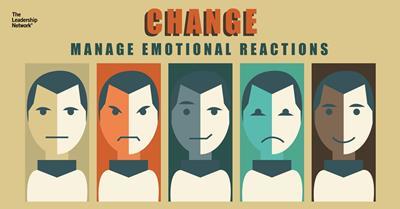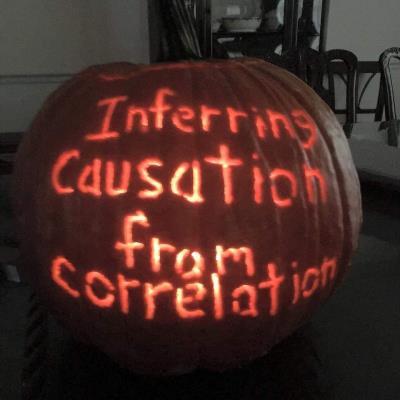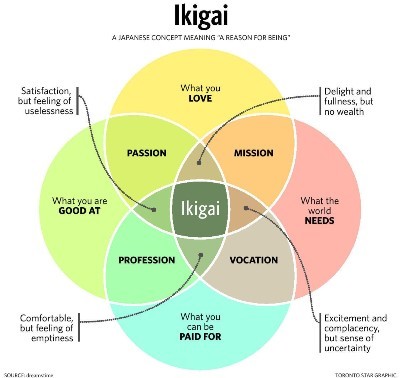Jeremie Averous's Blog, page 47
February 23, 2019
How the Science Behind Popular Psychological Effects is Often Wrong
Surprise, the science behind our previous blog post ‘How To Play With the Psychological Lunch Effect‘ was wrong! An excellent post ‘Impossibly Hungry Judges‘ explains in detail why and gives all the necessary links to papers that show why. Still, many people use this study as a reference (and we did too as it is entrenched in popular knowledge!)
 This is just another example that we need to take with a pinch of salt all those popular psychological studies. In this case, as shown in this paper ‘Overlooked factors in the analysis of parole decisions‘, there were many other factors that explain very well the order of cases during the morning and afternoon and explain better the timing: easier cases that are supported by lawyers are considered first, etc.
This is just another example that we need to take with a pinch of salt all those popular psychological studies. In this case, as shown in this paper ‘Overlooked factors in the analysis of parole decisions‘, there were many other factors that explain very well the order of cases during the morning and afternoon and explain better the timing: easier cases that are supported by lawyers are considered first, etc.
We know intuitively that timing and lunch may play a role, but the correlation was just too strong to be true. It is probably much weaker. This is just a reminder of how much we need to be careful between correlation and causation, and when we read about a surprising psychological study!

February 21, 2019
How To Play With the Psychological Lunch Effect
A famous and often quoted study ‘Extraneous factors in judicial decisions‘ shows that judges’ decision-making is greatly influenced by timing, and particularly whether they are hungry: the proportion of parole granted goes down to a flat zero just before lunch.
 Percentage of positive decisions based on time in the day
Percentage of positive decisions based on time in the dayThis tends to be an excellent illustration of the effect of timing of our decision-making abilities.
Using the lunch effect is one of the dirty secrets of facilitating: I often make sure that the hardest decision-making topics are tackled at the end of the morning just before lunch time, just to be able to use the fact that I can postpone lunch until a decision is taken. When participants become hungry they suddenly tend to agree on some decision, letting their fights on the side.
The lunch effect can thus be positive or negative, just know how to use it to your advantage.

February 19, 2019
How Emotions Drive Organisational or Social Change
I love this Gapingvoid post ‘Why change management is emotional‘. It just hits the nail that every organization leader should avoid. Contrary to general belief, change can’t just be created by an executive decision and a powerpoint deck.
 “The only thing that drives real change are emotions.
“The only thing that drives real change are emotions.
A major change is emotional brain chemistry and can be ignited just by a simple thing you do or say. Once you’ve flicked the switch, amazing things can happen. It should be supported by reason or argument”
It follows that it is essential at the start of a change management process to identify which are those emotions which you expect to change and address.
It may look hard, but actually when taken from the emotional side, change can be quite easy. What’s difficult is to figure out the hot button that will make the organization respond.

February 16, 2019
How Increasingly Difficult It Can Be To Prove Causation vs Correlation
Following up from the post ‘How the Van der Waerden Theorem Shows the Limits of Big Data‘, since Big Data will produce an increasing number of spurious correlations, the issue of identifying causation versus correlation will become increasingly important.
 This Medium article ‘Understanding Causality and Big Data: Complexities, Challenges, and Tradeoffs‘ does a good work to explain the issues at stake. It also explains in a clear manner when causation is really needed, and when correlation is sufficient.
This Medium article ‘Understanding Causality and Big Data: Complexities, Challenges, and Tradeoffs‘ does a good work to explain the issues at stake. It also explains in a clear manner when causation is really needed, and when correlation is sufficient.
The most important in my view is that with the increasing complexity of our world (directly inherited by our increasing linkage), proving causation will become increasingly difficult. It does not help that we are trying to increasingly derive causation from smaller effects, which are on the border of being statistically significant. The causation chain can have some very indirect links that will make it difficult to determine what is causing what. I believe the current debates about the effect of certain chemicals used in natural environment (such as pesticides) exactly demonstrates this issue: in a complex ecosystem, proving a causation link is very difficult even if there is correlation.
Substantial theoretical and practical progress in the methods to determine causation is an important issue for the world today. I hope that enough focus and effort is dedicated to this problem.

February 14, 2019
How AI is Being Used to Spot Lies and False Declarations
Following up on our review of the changes brought by AI in the field of justice (see for example the post ‘How Predictive Justice Software Starts Being Used‘), this interesting Quartz post ‘Police are using artificial intelligence to spot written lies‘ addresses how AI can detect fake statements for insurance or police.
 Certain patterns can certainly be identified to assess the probability for a statement to be untrue, but the immediate question if of course up to what level this may be used. Is this only to prioritize those declarations that would warrant further investigation, or would that lead to a straight rejection?
Certain patterns can certainly be identified to assess the probability for a statement to be untrue, but the immediate question if of course up to what level this may be used. Is this only to prioritize those declarations that would warrant further investigation, or would that lead to a straight rejection?
One can also expect in the near future to see a whole new industry of AI statement coaches to emerge, with coaches and counter-AI programs being made available to check the veracity level and modify the initial statement to make them appear more credible… The interesting part here is that we are increasingly moving into a world of conformity, because AI will instantaneously detect anything that comes out of the ordinary.

February 12, 2019
How the Japanese Concept of Ikigai Increases Life Satisfaction
The concept of Ikigai has been floating around the web lately, like in this Medium article ‘Ikigai: The Japanese Secret to a Long and Happy Life Might Just Help You Live a More Fulfilling Life‘. It seems to be a japanese concept aimed at locating the area at the intersection of what you love doing, what you are good at, what you can be compensated against, and what the world needs. Compared to other models, it is this last addition which makes the approach special.
 The addition of values and seeking activities that the world needs is an interesting change to the more classical model of finding the soft spot between passion, career and capability. It definitely gives an interesting spin to the exercise of finding out where to locate what we are currently doing as our main activity.
The addition of values and seeking activities that the world needs is an interesting change to the more classical model of finding the soft spot between passion, career and capability. It definitely gives an interesting spin to the exercise of finding out where to locate what we are currently doing as our main activity.
As to whether finding one’s Ikigai is the best way to prolong life, that’s a stretched conclusion which we’ll not investigate further, although this claim obviously creates interesting reflections.
How close are you to your Ikigai?

February 9, 2019
How Memos Are More Powerful Than Powerpoints to Structure Thoughts
I am always amazed at how Powerpoint presentations have become the standard support to structure thinking in organizations. I sometimes feel old-fashioned because I prefer to work on memos to get my thoughts in order. Luckily I am not alone: Jeff Bezos at Amazon has banned powerpoints in favor of structured memos, as explained here or here. And I truly believe that memos have substantial benefits.
 Powerpoint presentations are everywhere in organizations. I even know some that use this support for their commercial proposals! This tool has great benefits in terms of sharing, but it also structures the thought process in a certain way: bullet points, overall structures that are fit for presenting.
Powerpoint presentations are everywhere in organizations. I even know some that use this support for their commercial proposals! This tool has great benefits in terms of sharing, but it also structures the thought process in a certain way: bullet points, overall structures that are fit for presenting.
Memos are of course less sexy when it comes to sharing ideas but I find that they allow a more structure thought build-up. That is possibly because a certain logic needs to be developed throughout the document, which is not so much the case in a powerpoint presentation. Also, there are much less possibilities to be distracted by some graphical representations.
My personal process when developing detailed thoughts about an issue is to write a memo and work around structuring it in a satisfying manner. If needed I may produce an additional powerpoint presentation, but I find the memo format much more amenable to the development of a structured approach.
If you find you are producing too much powerpoint thoughts, try to structure your thinking using memos. It is worth it!

February 7, 2019
How AI trainer is the new trendy gig for students and young professionals
I was not aware until recently how the job of “AI trainer” is the new gig for students seeking some extra money and for young professionals. But as AI-based services and ‘deep-learning’ products increase, there is a need to help them learn faster from existing data. The job is about feeding the data to the software and manually correcting the outcome to help the algorithm learn faster.
 AI teaching sweatshop in Asia
AI teaching sweatshop in AsiaFor some basic image recognition, there are even sweatshops setup in low-cost countries to teach the algorithms. For more complex matters, this is generally performed in the AI company premises by graduate students in the relevant specialty.
Of course, the intent of deep-learning algorithm is to replicate what has been taught to it in a scalable manner, therefore automatizing the job that was previously performed by junior personnel. But the irony is that it also creates the new job of teaching it on the basis of an initial set of data how to respond and what to produce.
Let’s not be astonished if the first jobs of new graduates in the years to come is ‘AI teacher’!

February 5, 2019
How the Van der Waerden Theorem Shows the Limits of Big Data
The Van der Waerden theorem states basically that if a string of data is long enough, there will always be instances of periodic occurrences. This means that when there is enough data, there will always be regularities – and they will not be meaningful, it is just a mathematical situation.
 This theorem just means that for a big enough heap of data, we will find correlations that in fact do not have any meaning: these are spurious correlations.
This theorem just means that for a big enough heap of data, we will find correlations that in fact do not have any meaning: these are spurious correlations.
Hence we can expect that with big enough data, Big Data analysis will throw up heaps of correlations that have no meaning at all.
But we can also expect that some people and organizations will take action based on those correlations, and that it may sometimes be deeply counter-productive.
Those who will have success in the world of bid data are those that will be able to sieve the many spurious correlations from the few real insights that can be gained from analysis. This will not be easy, because intuition may not be of great help. A thorough scientific analysis will be required, involving reproducibility of experiments in various independent data sources – and that will be difficult to do fully.
Let’s thus brace for many spurious correlations to be announced as discoveries only to be disproved some years later!

February 2, 2019
How to Take Action on Uncertain Opportunities
Following up on our post ‘How to be More Lucky in Life: the Luck Factor‘, one specific aspect is taking action on opportunities. Once one has increase the number of potential opportunities, remains the need to take action to benefit from the luck. And it is sometimes difficult – and often makes the difference.
 It is always psychologically difficult to decide to enter an uncertain venture. It is a bet and there is no certainty as to its outcome. How can one be more comfortable taking those decisions?
It is always psychologically difficult to decide to enter an uncertain venture. It is a bet and there is no certainty as to its outcome. How can one be more comfortable taking those decisions?
Based on my experience here are some pointers. And I find that the stock market is an excellent teaching ground to determine behaviors that can later be applicable to many other fields :
the foreseeable worst case outcome should not impact substantially our well-being. For example for financial decisions its worst possible impact should be less than a limited % of our total assets, or the time involved should not burden excessively our calendar.
The possible best case outcome should produce substantial value
It generally boils down to the confidence we may have with certain people. How is the fit with those people, what is our hunch?
Do we have a portfolio of opportunities that spreads the risk and ensures that on average, there will be benefits and possibilities to enhance further lucky strikes?
In addition, one should be ready to stop losses when it becomes obvious that the opportunity does not work out (including in time and money involved), and the other aspect is not to be too persistent on luck: know when to fold on a lucky opportunity, it will not last forever.
Grab opportunities, act on them: the secret for luck to realize! Are there opportunities lying there where you did not take action? Go for it!




